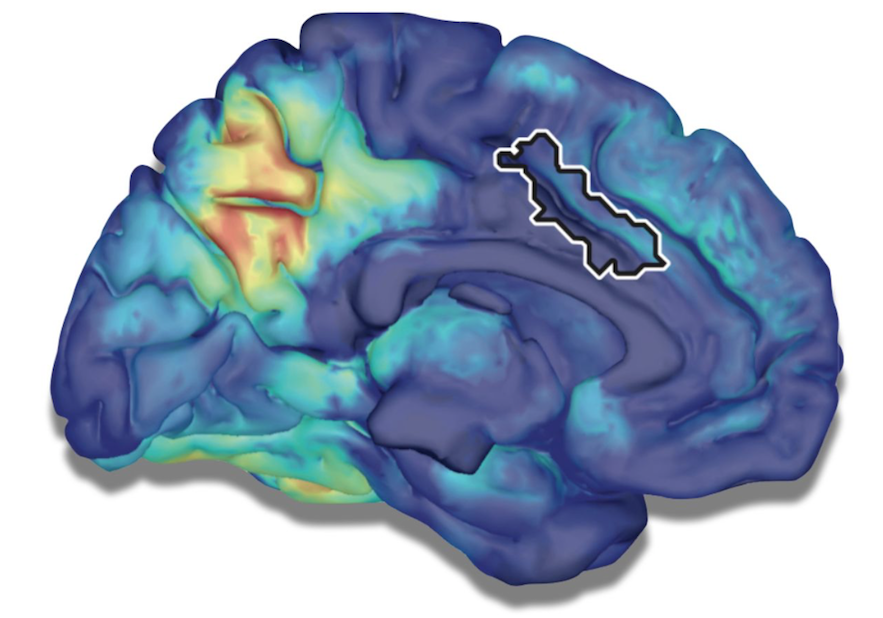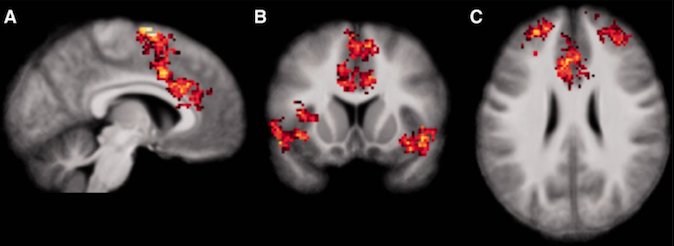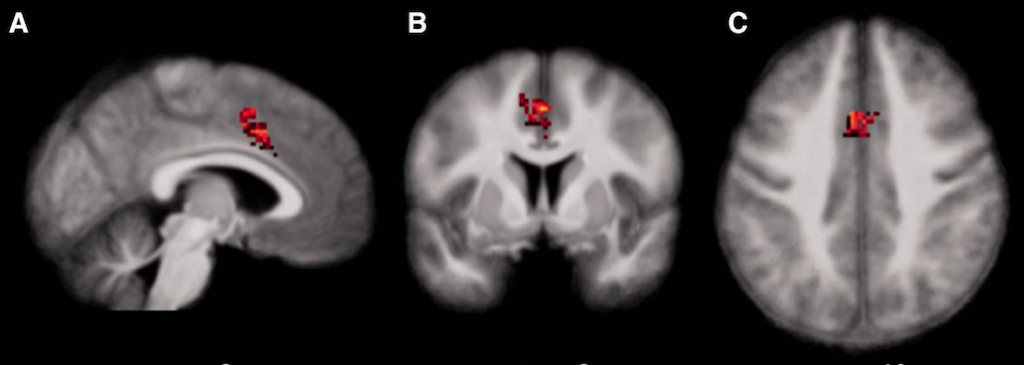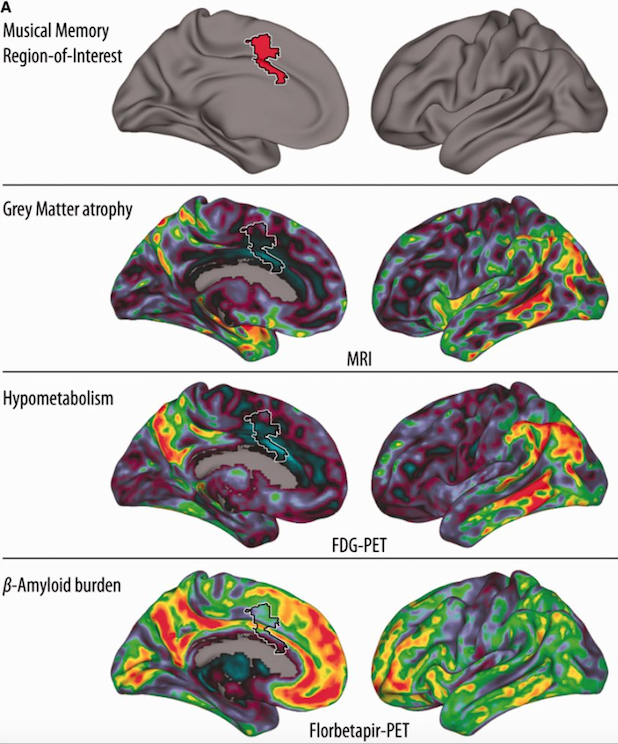Title of paper under discussion
Why musical memory can be preserved in advanced Alzheimer’s disease
Authors
Jörn-Henrik Jacobsen, Johannes Stelzer, Thomas Hans Fritz, Gael Chételat, Renaud La Joie, Robert Turner
Journal
Brain, Volume 138, Issue 8, August 2015, Pages 2438–2450
Link to original paper (free access)
Overview
It has long been recognised, both anecdotally and scientifically, that people with Alzheimer’s disease retain long-term musical memories whilst losing other kinds of memory. Keen to discover the reasons behind this, researchers from the Max Planck Institute in Leipzig in 2015 set about 1) identifying the regions of a healthy brain that are involved in processing long-term musical memories (as distinct from recently learnt or unknown music) and 2) scanning the brains of people with Alzheimer’s to see if disease progression in those very same regions was particularly limited, thereby perhaps explaining how long-term musical memory might be being ‘spared’ whilst other types of memory suffer.
They found that although the brain regions identified as key to processing long-term musical memories were, in people with Alzheimer’s, covered in ß-amyloid plaques (the first stage of the disease) they were however particularly slow to succumb to ‘hypometabolism and atrophy’, two symptoms associated with cognitive impairment, so ‘sparing’ that person’s long-term musical memory.

The experiment was divided into two parts:
Part 1
Aim
An investigation into the brains of healthy people to discover where the ‘seat’ of long-term musical memory is located.
Method
32 people with healthy brains were each asked to listen to an individually bespoke playlist of 60 song excerpts (each one lasting 20 seconds) whilst lying in an fMRI scanner. These songs, though matched in ‘genre, mood, composition style etc’, fell into three different categories (20 in each category):
1) songs known from their past, taken from the German top 10 chart lists of 1977-2007 (‘long-known songs’)
2) songs unknown to them until hearing them twice, one hour before going into the scanner (recently-known songs’)
3) songs unknown to them (‘unknown songs’)
All the while the fMRI scanner recorded their brain activity, and 3D scan images were created to show the locations of such activity during each song.
Results
It’s important to remember that the researchers were aiming to find out where brain activity was occurring specifically in relation to the processing of long-known songs.
To this end they looked at the brain scans taken during long-known songs and compared them with scans taken during recently-known songs and during unknown songs. Through such comparisons they could isolate those regions of activity that are specific to the processing of long-known songs.
Here’s such a comparison (A, B and C are just different ‘slices’ of the same brain) showing the difference in brain activity (in red) between someone listening to a long-known song and the same person listening to an unknown song:

And here’s another comparison, this time between someone listening to a long-known song and the same person listening to an recently-known song:

You can see that the differences in the second image are much more focussed, presumably because the extra differences in activity that are due to hearing something for the first time (visible in the first image, long-known vs unknown) have gone.
And the (red) brain regions that therefore seemed to be key to processing long-known songs are: the caudal anterior cingulate gyrus and the ventral pre-supplementary area.
Part 2
Aim
An investigation into the brains of people with Alzheimer’s to see if the regions identified in part 1 as being the ‘seat’ of long-term musical memory showed signs of less disease progression, thus accounting for their retention of long-term musical memory.
Method
At this point our German research team used data from a previous study carried out by La Joie et al in Caen, France in 2012.
La Joie used structural MRI scanning to look at the brains of 20 people with Alzheimer’s disease compared with 34 healthy control subjects. Specifically his team assessed the brainwide location and severity of three key markers in the progression of Alzheimer’s disease:
1) ß-amyloid plaque accumulation
2) glucose hypometabolism
3) cortical atrophy
Results
The 4 pairs (left hemisphere viewed from two angles) of scan representations below detail, from top to bottom: 1) In red (and in white online on every subsequent image) the location of the brain region that is key to long-known song processing 2) in colour (see key) the brainwide distribution and severity of cortical atrophy 3) in colour (see key) the brainwide distribution and severity of glucose hypometabolism and 4) in colour (see key) the accumulation of ß-amyloid plaques.


These results demonstrate that when looking at the severity level of Alzheimer’s Disease markers in the long-known musical memory region compared with other brain regions, ß-amyloid deposition is greater but cortical atrophy and glucose hypo metabolism – two major markers of tissue damage – are both much lower.
Conclusion
In the words of the research team:
“In this study we compared the brain areas that encode long-known music with the anatomy of Alzheimer’s disease degeneration. The results offer a potential explanation of why musical memory is so surprisingly well preserved in many patients with Alzheimer’s disease.”
“In conclusion, our results suggest a neuroanatomical explanation for the preservation of musical memory in many Alzheimer’s disease cases, and provide evidence for an encoding of musical memory in brain regions that are affected only at late stages of Alzheimer’s disease.”
Coda
“All German no 1 hits from the 1980’s“
Various artists